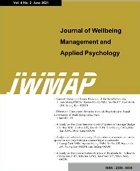 E-ISSN : 2586-6036
E-ISSN : 2586-6036
KWON, Woo-Taeg
Abstract
Purpose: This study was conducted to develop a module with higher removal efficiency and effectiveness by adapting two or more deodorization techniques for main cause of odor pollution exposed citizen living near water treatment facilities. Research design, data and methodology: To consider the standard, unity, electrical wire, compatibility of detachable device by installing two types of dry deodorization device within one module for easy replacement. Complex odor, H<sub>2</sub>S, NH<sub>3</sub> were collected from sewage treatment facilities for evaluation of deodorization device. Results: Using the developed application in this study, removal efficiency of complex odor, H<sub>2</sub>S, NH<sub>3</sub> were 93%, 100%, 82%, respectively. Conclusions: The H<sub>2</sub>S removal efficiency of deodorization device was higher than bio-filter system, which were currently used by sewage treatment. Further, the device should be considered for use in efficient odor removal system.
- keywords
- Complex odor, <tex> $H_2S$</tex>, <tex> $NH_3$</tex>, Water treatment, Complex module devices
- Downloaded
- Viewed
- 0KCI Citations
- 0WOS Citations













